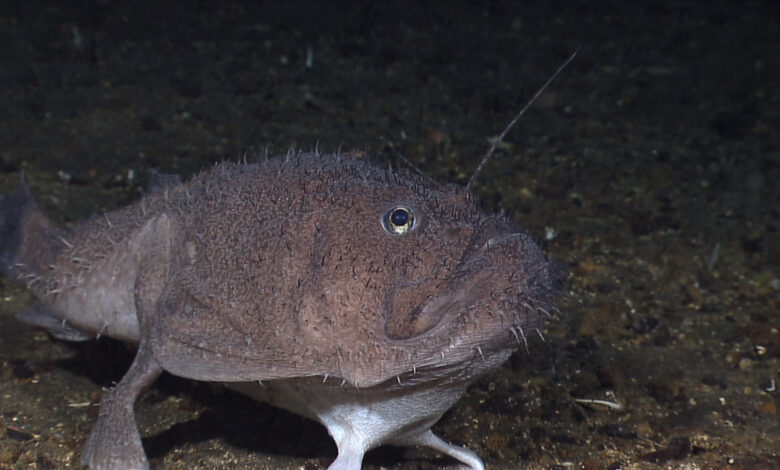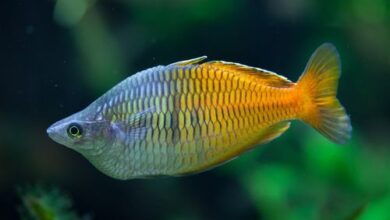Angler Fish: A Close Look at the Fascinating Angler Fish

FAQ about Angler Fish
Do Angler Fish Still Exist?
Yes, angler fish are still alive and thriving in oceans around the world. As one of the deep sea’s top predators, they play an important ecological role in hadal zones below 1,000 meters depth where few other creatures venture. While deep-diving anglers are rarely observed directly by humans, specimens are still regularly captured or filmed with deep submersibles. Their unique evolutionary adaptations, like bioluminescence and bizarre reproduction, have let angler fish persist for over 100 million years, cementing their status as apex survivors of life in eternal night.
Why Do Angler Fish Have a Light?
Angler fish evolved their signature esca or lure with bioluminescent bacteria as a way to hunt prey in the pitch blackness of the abyss. By mimicking smaller marine life through glow patterns and appendage movement, angler fish lures deceive unwitting creatures into drawing near. This allows angler fish to catch a meal that may otherwise be impossible to find, wandering blindly in the murk. Studies show angler fish light frequency and intensity match what their targeted food sources can best detect, showing co-evolution between angler “fishing rods” and their visual prey.
Can You Eat Angler Fish?
While some large commercial angler fish species are fished and sold for eating in Europe, angler fish are not commonly consumed in Australia. Smaller varieties can have a mild flavor but tough, cartilaginous flesh. Larger types develop strong flavors from consuming carotenoid-rich prey in the deep. However, angler fish may accumulate high mercury levels from their diet up the food chain. So the Australian Government advises limiting consumption of any wild-caught angler fish to once per month to avoid contamination risks, similar to shark and swordfish. Their bony structures make angler fish tricky to prepare and consume compared to popular table fish.
What Do Angler Fish Eat?
As ambush predators hidden in darkness, angler fish have a varied diet consisting of any marine creatures near enough to be swallowed. Common prey includes lanternfish, bristleworms, krill, shrimp, small squid and fishes. By mimicking these types of bioluminescent organisms with their lures, angler fish attract their preferred meals within striking distance.
Larger angler fish species feast on bigger morsels like cuttlefish and small sharks. Angler fish stomach contents examined by scientists showcase the range of critters dwelling at depths their jaws can access. Even specimens as small as 6 inches long have been found with prey filling their entire gullets. In the energy-scarce abyss, angler fish have evolved to leave no calorie unconsumed.
Do Angler Fish Give Birth?
Angler fish are actually ovoviviparous, meaning they give birth to live young rather than laying eggs. After males fuse permanently with females and transfer sperm, the female’s ovaries become fertilized. Her eggs then develop internally and hatch inside her body. This caring gesture ensures angler fish babies emerge fully developed to fend for themselves instead of as helpless eggs vulnerable to predators.
Litters usually number less than ten miniature angler fish around 1-2 inches long. The young immediately disperse on their own to avoid competing with their many siblings for limited resources. Early childhood brings hazards, but any survivor inherits their parents’ capacity to dwell in perpetual night. By evolving live-bearing, angler fish maximize the chances their lineage will persist in the abyss for generations more to come.
Angler fish are some of the most unusual creatures found in the deep ocean depths. With their bioluminescent lures and bizarre mating habits, they capture people’s imagination. However, for most, angler fish remain mysterious animals that are rarely seen by human eyes.
Angler Fish Size and Weight
Angler fish come in a wide range of sizes depending on the species. The smallest angler fish species only reach about 2.5 cm in length as adults. However, some angler fish species truly push the boundaries of what’s possible for a fish. The largest angler fish on record was a female [species name] measuring over 7 feet long. This enormous angler fish weighed an astonishing 50 pounds, making it roughly the size of a small shark.
The average angler fish you might encounter is closer to the 12-15 inch range. However, females of some deep-sea species like the [species name] regularly reach over 3 feet long. Considering they inhabit one of the deepest, darkest parts of the ocean, it’s easy to understand how angler fish got their reputation for being monstrously big. While 7-foot angler fish are exceptionally rare, they demonstrate just how gigantic these unusual fish can become when provided with plenty of food and space to grow.
Angler Fish Lifespan
Given the harsh environment of the deep ocean and the challenges of reproduction, angler fish have evolved to live long lives. The average angler fish lifespan ranges from 10-25 years, depending on species and sex. However, some long-living angler fish are believed to reach up to 50 years of age! Females, in particular, tend to outlive males by many years. This extended lifespan allows females to fully mature and effectively mate over multiple breeding cycles throughout their lifetime.
The extreme pressures and lack of light found at hadal depths also contribute to angler fish’s generally slow growth and maturity. It can take females 5-10 years to reach sexual maturity, while males mature much sooner at only 1-2 years. This protracted development period may be an adaptation to helping angler fish maximize survival chances in their hostile abyssal habitat. Their lengthy lifespans also mean angler fish play an important ecological role by supporting many other deep-sea creatures that feed on their slow-growing bodies.
Angler Fish Light
One of the most iconic features of angler fish is the glowing lure found on the head of the female. Known as an esca or illicium, this bioluminescent lure acts like a fishing rod to attract prey. Special light-emitting photophores concentrate bacteria that produce light in a pattern mimicking the silhouettes of smaller fish or shrimp. When curious creatures move in to investigate this false food source, the female angler swiftly engulfs them in her cavernous mouth.
Studies show angler fish lights emit a pale blue glow most visible in the deep ocean’s dim twilight zone from around 600-1000 meters down. The pattern and color of each lure are uniquely adapted for the visual systems of the specific prey species it aims to deceive. Some lures even dangle fleshy appendages or move in alluring swimming motions on their own. Without these lures, angler fish would struggle to find food in the perpetual darkness where they dwell. Their bioluminescent innovation makes angler fish apex predators despite their small size.
Angler Fish Mating
Angler fish mating is perhaps the most bizarre aspect of their biology. Females grow much larger than males and heavily outnumber them at up to 100:1 ratios. Upon encountering a female’s pheromones, a male will bite down on her skin and fuse permanently with her body. In some cases, he melds entirely except for his gonads which continue functioning only to fertilize the female’s eggs. This parasitic union benefits the female by removing risks of energy-intensive mate-searching while providing a reliable source of sperm.
For the male, fusion allows him to eventually pass on his genes despite lacking other means to compete against rival suitors. Over time, the male begins to resemble more of a lump of tissue than a fully developed fish. Some attached males shrink to just a quarter of an inch long, having sacrificed almost all other functions to focus on sperm production. It’s truly one of the most extreme forms of sexual dimorphism found anywhere in the natural world.
Angler Fish Size to Human
To put angler fish size into perspective compared to humans, here are some comparisons:
- The largest angler fish on record, measuring over 7 feet, would have been significantly bigger than most adult humans. It likely dwarfed even tall basketball players.
- The average 12-15 inch angler fish is about the length of a human forearm. So a typical specimen could sit easily in the palm of one’s hand.
- Baby angler fish of just 2-3 inches in length are diminutive, only reaching from a human’s wrist to the tip of their middle finger. Under a microscope, their details would be hard to make out.
- Even the largest female angler fish of 3+ feet pales in comparison to the height of an average Australian man or woman. But they are still substantial predators as long as a typical pet dog.
- Visualizing a 6-inch angler fish nestled in one’s closed fist helps emphasize their small stature for such bizarrely adapted creatures.
So while some angler fish species can reach up to 2 meters, most stay quite pocket-sized. But their outsized traits like voracious appetite and grotesque mating make angler fish seem far more immense than their actual body lengths alone suggest.
7-Foot Angler Fish
As mentioned, there have been exceptional cases of truly giant angler fish recorded. Usually, females of the largest deep-sea species, these behemoths help illustrate the full extent of growth angler fish is capable of achieving given optimal conditions. The unofficial record holder stretched over 7 feet long when discovered, weighing a hefty 50 pounds.
Nothing is known about this leviathan angler fish’s exact habitat or life history. But its massive size indicates it lived an extremely long life in an area with abundant prey availability. Its oversized mouth could swallow dinner plate-sized morsels whole. Meanwhile, its lure would mesmerize even large squid and fish seeking a quick meal. As a top oceanic predator, this angler mother ship likely reigned supreme over its deep sea domain for decades.
Eyewitness accounts of glimpsing mammoth specimens like this are rare since angler habitat starts at depths light cannot reach. But occasionally, trawling nets or submersible cameras catch a fleeting view of the marine world’s largest angler, leaving scientists awestruck at the abilities of a species typically associated with diminutive dimensions. Truly, angler fish demonstrate that in the abyss, even the tiniest of fish can evolve superlative sizes.
Conclusion
In closing, angler fish conceal astonishing adaptations beneath superficial appearances of monstrous size or diminutive dimensions. Through traits like sinister fangs, bioluminescent lures, parasitic mating, and viviparity, they thrive as cunning apex inners of the ocean’s deepest recesses accessible to few others. While rarely glimpsed by humanity’s eyes, angler fish remain sentinels of what life can evolve to become in Earth’s ultimate frontiers of pressure and inky blackness. With their immense majesty packed into strange little packages, angler fish offer constant reminders that spectacular qualities often come wrapped in the unlikeliest forms.



